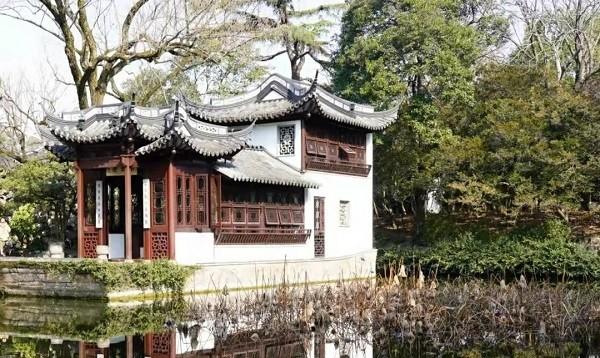
Pictured: After repairing the boat, the ancient yi garden provides (the same below)
23 old buildings, "repaired as old" all repaired. The reporter learned from Guyi Garden that since the start of the largest protective repair project in the past 40 years in October 2020, the fourth phase of the repair project has recently been completed ahead of schedule. This year is the 500th anniversary of the establishment of Guyi Garden, and the park hopes to tell the vicissitudes of the history of The Garden with the ancient buildings that have been rejuvenated.
Classification classification minimum intervention
The conservation repair project adopts the method of "classification and grading", and adopts different interventions according to the protection status and damage of 23 buildings to achieve "minimal intervention".
Of the 23 buildings, 10 are located within the core protection area of the Ming and Qing dynasties, so ensuring the safety of cultural relics buildings is a top priority. During the project, the roofs of Yiye Hall, South Hall, Plum Blossom Hall and other buildings were renovated as a whole, and a waterproof layer was added to eliminate the hidden dangers of water leakage; the problem of uneven settlement of the Floating Pavilion was solved to ensure that the building was no longer tilted to the water surface; the intangible clay sculptures of the White Crane Pavilion, the Missing Horn Pavilion, the Painted Moon Pavilion, the Untied Boat, and the Flying Fish Leaping Xuan were reshaped to show the beauty of the classical garden; the spatial pattern of the South Hall and the Micro Sound Pavilion was optimized, and the micro-sound was reopened on the 100th anniversary of the founding of the Party last year.
Pictured: After the restoration of the missing corner pavilion
The remaining 13 buildings are located outside the core conservation area. Under the principle of coordination with the classical garden style, a targeted repair plan was formulated according to the current situation of each building.
For example, Heshouxuan is a double pavilion with a combination of pavilions, and the architect Academician Qi Kang was involved in the design. Because of the damage to the roof, the garden has adopted a strategy of "checking for leaks and filling in the gaps", focusing on the restoration of the crane clay sculpture in the corner of the house, and restoring the Shou Tao Men Cave according to the old photos, closely following the name of Crane Shou Xuan. Another example is the Liuyin Bridge, which was designed and rebuilt by Liu Xujie, the son of the famous architectural historian Liu Dunzhen. According to the current situation of the Liuyin Bridge, small repairs such as cleaning the roof and repairing paint damage were carried out.
Pictured: After the restoration of the Micro Sound Pavilion
Invite craftsmen to repair the old as old
During the renovation project, some traditional craftsmen were also invited to inherit and reproduce many traditional crafts.
Clay sculptures are one of them. This is a typical decorative element of Jiangnan gardens, but the clay sculptures on the roofs of the garden, such as Yuexuan, White Crane Pavilion, South Hall, and Heshouxuan, have fallen into disrepair and are damaged, so the garden has invited non-hereditary inheritors of traditional clay sculptures in Suzhou to restore them. During the restoration, the clay sculpture inheritors use steel wire as the skeleton, use the traditional paper tendon gray molding, and after 4-5 days of solidification, use white mortar and ink to mix colors. Subsequently, according to the current situation and style characteristics, more than 100 clay sculptures were restored with the theme of plants and animals, including the white crane of the White Crane Pavilion, which vividly restored and reproduced the craftsmanship of that year.
Pictured: Crane Shouxuan repairs the crane clay sculpture
Wide lacquer is also a complex process. Guang lacquer is a traditional paint material made of tung oil and raw lacquer, which is durable and impermeable, and is more used in humid areas in the south. However, the extensive paint process is elaborate and complicated, and there are about 12 processes to repair a pillar, which requires repeated batching and grinding. After the lacquer has just been painted, the color is darker, and it will not return to the real color after 1 to 2 months, and at present, the buildings restored with the lacquer in the park are gradually "changing color".
In addition, in order to avoid repairing the building too new and too colorful, the color of the building is very elaborate. The treasure roof and the horned fist of the missing corner pavilion, the flower window on the second floor of the untied boat, the kicking foot of the door opening of the Floating Pavilion, and the pane of the gable of the Plum Blossom Hall have all been treated with old treatment, the color is simple, and the old is repaired as old.
Xinmin Evening News reporter Jin Minyi